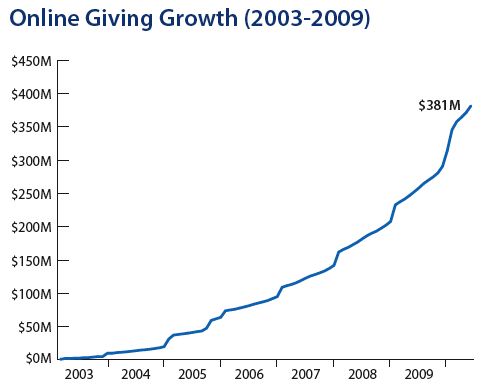
 Yesterday Network for Good and TrueSense Marketing released a landmark study of the online giving experience that offers important findings for nonprofits, donation portals, social networks and individual donors.
Yesterday Network for Good and TrueSense Marketing released a landmark study of the online giving experience that offers important findings for nonprofits, donation portals, social networks and individual donors.
The study analyzed the $381 million that individuals have donated to 66,000 charities through the Network for Good platform over the past seven years. It also shows just how far philanthropic giving on the Web really has to go.
This much we knew in our bones: People tend to give more when the online experience is intimate and touches them on an emotional level. They also give online for reasons of convenience, especially at the end of the year — the numbers are startling — and during large-scale disasters. But online donors’ relationship with charities can be ephemeral.
The authors write: “The weak relationship between donor and nonprofit in the giving experience also could depress giving levels. In many cases, donors give through social sites because of a relationship with a friend rather
than with the charity they support. Or, they are making a gift out of a fleeting impulse or a sense of convenience. This results in a one-time gift but does not establish the solid relationship with the charity.”
You can download the free report, “Online Giving Study: A Call to Reinvent Donor Relationships,” at onlinegivingstudy.org.
Highlights of the study
Throughout the study, the authors included actionable tips to help you use the findings to improve your online fundraising results. Some highlights of the study:
- Networks like Causes, Change.org, YourCause.com and others brought in donors averaging $113 in gifts in 2007. By 2009, their cumulative value was only $123.
- Your own nonprofit site is a far more potent portal for giving than donations made through the social network engines. Giving on social networks is still significant, but donor loyalty is highest on charity sites that build strong connections with donors. Personality matters on these sites: The loyalty factor for donors acquired through generic giving pages is 66.7% lower than for donors who give via charity-branded giving pages.
- Fundraising is about relationships (surprise!). Just as the strength of the donor-charity relationship heavily influences offline giving, the online giving experience also has a significant impact on donor loyalty, retention and gift levels. Small improvements to the online experience can make a big difference in donations. (See John Haydon’s accompanying article, How to optimize your nonprofit’s donation button.)
- Giving on social networks is significant, but donor loyalty is highest on charity websites that build strong connections with donors. Personality matters on these websites: The loyalty factor for donors acquired through generic giving pages is 66.7% lower than for donors who give via charity-branded giving pages.
- Analysis of cumulative online giving (i.e., giving added up over time) via different pages powered by Network for Good shows that donors who gave via charity websites started at the highest level and gave the most over time. Those who used giving portals started lower and gave less over time. Those who used social giving opportunities gave the least initially and added little afterward.
- Recurring giving is a major driver of giving over time and should be strongly encouraged in the giving experience.
- A third of all online giving occurs in December, and 22% of annual giving happens in the last 48 hours of the year. Online giving (by dollars) on Dec. 31 is concentrated between 10 a.m. and 6 p.m. in each time zone.

I urge you to download the free, very accessible report and see how its findings apply to your organization.
Related
• Free nonprofit reports to read or download (Socialbrite)
• Free social media reports to read or download (Socialbrite)JD Lasica, founder and former editor of Socialbrite, is co-founder of Cruiseable. Contact JD or follow him on Twitter or Google Plus.
 This work is licensed under a Creative Commons Attribution 3.0 Unported.
This work is licensed under a Creative Commons Attribution 3.0 Unported.









JD, great post. That bullet about the 22% isn't an over statement.
The comment in the study, "This results in a one-time gift but does not establish the solid relationship with the charity" underscores how important it is to invest in relationship-building.
The charity can't assume the donation created the relationship. It's a matter of how well the charity cultivates the connection by finding the channels the donor is using, reaching out, and establishing a relationship. This is more than just charity (org) to donor – it's about the people at the organization connecting to the donor.
Very well said, Shari! I'm still astonished by the amount of giving in the last 2 days. My guess is most charities aren't well-prepared for taking advantage of the opportunity. – jd